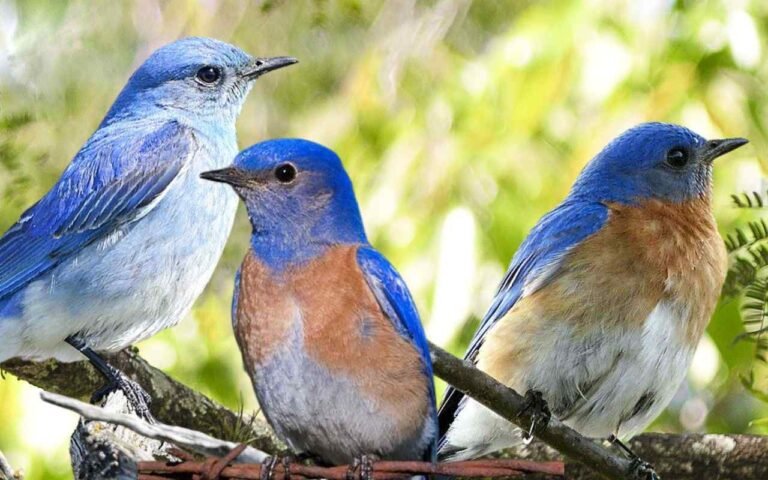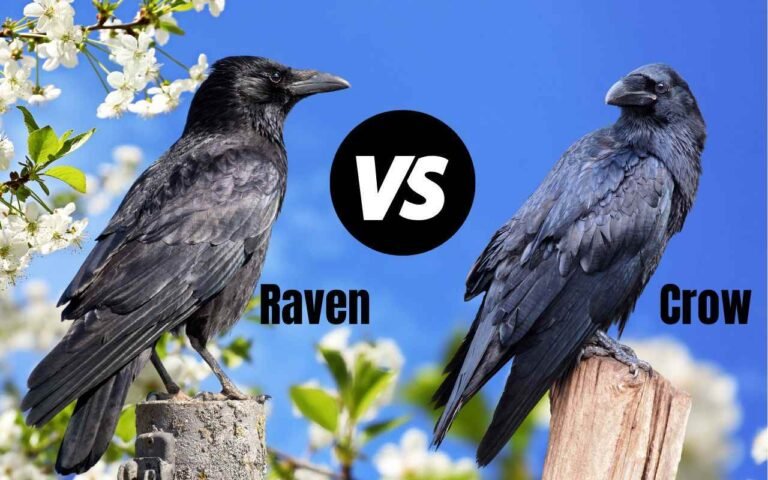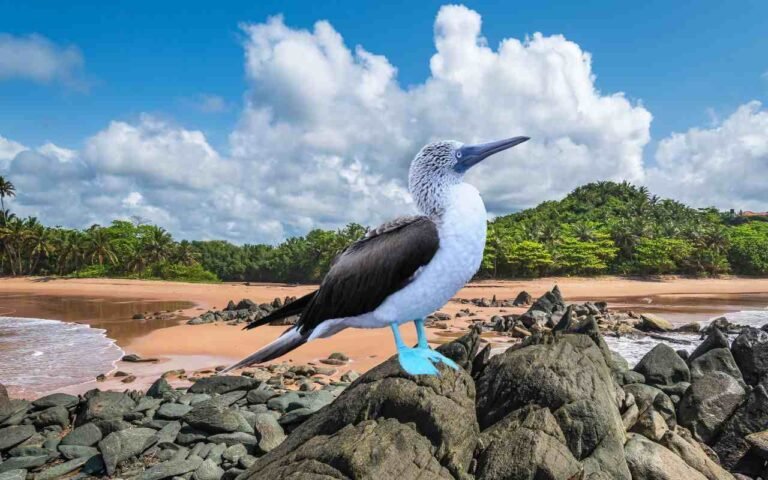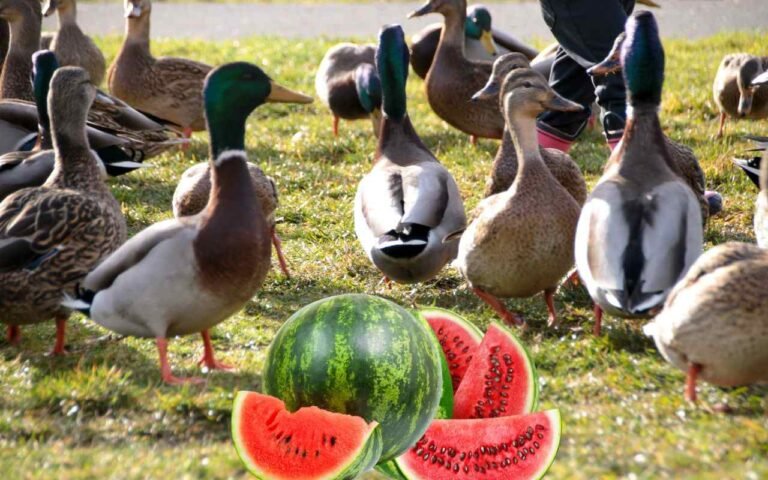Cormorant Vs Anhinga: Discover the Secrets of Two Aquatic Predators!
Cormorant Vs Anhinga, take a look into the world of aquatic opponents. Like anhingas and cormorants, waterbirds in the avian world are intriguing and sometimes misunderstood. They both belong to the Phalacrocoracidae family and are distinguished by their particular characteristics and hunting tendencies. Let’s examine the similarities and differences between these two intriguing species.
Cormorant Vs Anhinga
The Americas are home to anhingas (Anhinga anhinga), commonly known as “snakebirds” or “water turkeys,” which are medium to big aquatic birds. They become outstanding fish hunters because of their long necks and pointy, pointed beaks. They distinguish themselves from other ducks because of their unusual appearance and remarkable swimming abilities.
With more than 40 species found worldwide, cormorants are a varied group of waterbirds. The most common species in North America is the Double-crested Cormorant (Phalacrocorax auritus). These birds’ black plumage, thin bodies, and webbed feet enable them to dive and swim successfully in search of fish.
| Characteristic | Cormorant | Anhinga |
|---|---|---|
| Physical Appearance | Plump body with shorter neck | Slender body with long neck |
| Thicker bill | Splayed tail | |
| Black plumage | Dark brown body | |
| White throat patch | Blue-black head | |
| Green legs | White throat patch | |
| Feeding Behavior | Floats on water surface while fishing | Holds body underwater while fishing |
| Dips head underwater to catch fish | Stabs fish with long, sharp bill | |
| Habitat | Coastal areas, lakes, rivers, and urban areas | Freshwater lakes, rivers, swamps, and marshlands |
| Behavior | Often forms large colonies | Often perches on branches or posts |
| Builds nests in trees or on cliffs | Dries wings in the sun | |
| Conservation Status | Not considered endangered or threatened | Not considered endangered or threatened |
| Range | Found worldwide | Found in the Americas and parts of Africa |
| Size | Length: 60-100 cm | Length: 76-94 cm |
| Wingspan: 100-130 cm | Wingspan: 91-117 cm | |
| Diet | Mainly fish, eels, and some crustaceans | Mainly fish and sometimes amphibians |
| Swimming Behavior | Excellent swimmers and divers | Skilled swimmers but primarily surface divers |
| Flight Abilities | Strong fliers, travel long distances | Weak fliers, prefer short-distance flights |
| Nesting | Nest in colonies on cliffs or trees | Solitary nesters, build nests near water |
| Reproduction | Lay 3-4 eggs, both parents incubate the eggs | Lay 2-5 eggs, only female incubates the eggs |
| Vocalizations | Emit guttural calls and croaking sounds | Silent except during breeding displays |
Similarities between Anhingas and Cormorants
- Habitat: Freshwater areas like lakes, rivers, and marshes, where there is a lot of fish to eat, are preferred by both anhingas and cormorants.
- Feeding Habits: Both anhingas and cormorants are adept divers. After diving, they often perch with their wings spread out to dry while using their keen beaks to capture fish.
- Social Behavior: During the breeding season, these birds are often seen in colonies where they nurture their young and build their nests.
Main Differences between Anhingas and Cormorants
| Characteristic | Anhingas | Cormorants |
|---|---|---|
| Neck Length | Long neck | Medium-length neck |
| Feather Water Repellency | Not waterproof | Waterproof |
| Perching Behavior | Perch on land or trees | Often perch on rocks/buoys |
| Range | Found mainly in the Americas | Worldwide distribution |
As expert underwater hunters, anhingas and cormorants have comparable habitats and eating habits, yet they vary in several physical traits and geographic distribution. A look into the intriguing world of avian variety may be had by watching these different waterbirds in their native habitats.
Physical Appearance
Anhingas and cormorants are physically different in several ways that make them stand out. Let’s examine each waterbird’s distinguishing characteristics.
Anhinga:

- The Anhinga (Anhinga anhinga) is renowned for its long, thin neck, a distinguishing characteristic that facilitates its skill at underwater hunting.
- Their spread, fan-shaped tail aids them in swimming and fishing through the water.
- A distinctive white neck patch sticks out on their dark-colored head, contributing to their distinctive appearance.
- Notably, their legs are green, distinguishing them immediately from other waterbirds.
- Anhingas have a striking appearance with a dark brown body and a contrasting blue-black head.
Cormorant:

- In contrast to anhingas, cormorants have plumper, shorter neck and more significant bills that give them a firmer grip and more power for grabbing and eating fish.
- Cormorants are black, giving them a sleek and elegant look. They have white neck patches, like Anhingas, to contrast with their dark plumage.
- Cormorants also have green legs, a trait shared by many waterbirds.
| Characteristic | Anhinga | Cormorant |
|---|---|---|
| Neck | Slender, long | Plump, shorter |
| Tail | Splayed and fan-like | Notable for its thickness |
| Body Color | Dark brown | Black |
| Head Color | Blue-black | Black |
| Throat Patch | White | White |
| Leg Color | Green | Green |
In summary, Anhingas and Cormorants have distinct physical characteristics supporting their watery existence. Cormorants have plumper necks, more giant beaks, and black bodies, but anhingas have short necks, spread tails, brown bodies, and blue-black heads. Both species are eye-catching waterbirds to witness in their native environments due to their distinguishing white neck patches and green legs.
Feeding Behavior
Anhingas and cormorants are expert fish hunters, although their capture methods vary. Let’s examine these water birds’ peculiar eating habits.
Feeding habits of anhingas:
- Because anhingas are dabbling birds, they eat by swimming underwater and immersing their bodies.
- Anhingas can make deep dives to find fish thanks to their long, snake-like necks.
- When they see a fish, they quickly extend their pointed, sharp bills and perfectly pierce their victim.
- Generally speaking, anhingas eat tiny fish like minnows, perch, and catfish. They are renowned for their systematic stalking, sometimes staying underwater for many minutes to await the ideal opportunity to attack.
Feeding habits of cormorants:
- Cormorants are diving birds, using a characteristic underwater chase as their hunting strategy.
- With the help of their webbed feet, they are great swimmers.
- To catch fish, cormorants have been known to dive to depths of up to 25 meters.
- Contrary to anhingas, cormorants use their strong, hooked beak to snag fish instead of stabbing them.
- They are equipped with specific neck pouches that let them bring captured fish back to the surface.
- Cormorants eat a variety of species, including eels, perch, and herring, as well as fish of different sizes.
Anhingas love to follow their prey underwater, using their sharp bills to make quick, precise attacks. Cormorants, on the other hand, are skilled divers who use their hooked beaks to capture fish. These distinct eating habits have developed to fit each ecological niche and support their surroundings’ biodiversity and ecological balance.
Habitat
Both anhingas and cormorants may be found in a variety of environments, although they have differing habitat preferences. Let’s look at the many environments that these fantastic aquatic birds call home:
Anhinga Habitat:
Anhingas are often found in areas with gentler weather that are warmer and more tropical, such as the Southeast United States, Central and South America, and portions of Africa and Asia. They are usually seen in areas with shallow freshwater, such as:
| Anhinga Habitat | Description |
|---|---|
| Lakes | Anhingas often pursue fish in quiet, freshwater lakes. |
| Rivers | They live in slow-moving fish-rich rivers. |
| Swamps | Anhingas inhabit marshes and swamps with plentiful aquatic life. |
- These birds choose environments with thick vegetation close to water features that provide ideal perches and breeding areas.
Habitat of cormorants:
- Cormorants may be found in various habitats globally, from moderate to frigid climes, and they exhibit a more comprehensive range of environmental adaptation.
- Both freshwater and marine settings are home to them, including:
| Cormorant Habitat | Description |
|---|---|
| Coastal Areas | Cormorants eat fish and eels around coasts. |
| Lakes and Rivers | Like anhingas, they live in inland waters and eat fish. |
| Urban Areas | Docks and piers are home to several cormorant species. |
- For breeding reasons, cormorants may establish sizable colonies on cliffs and islands.
Cormorant and anhinga habitat comparison
The following table contrasts the habitat preferences of anhingas with cormorants.
| Particulars | Anhingas | Cormorants |
|---|---|---|
| Climate | Warmer, tropical | Temperate to cold |
| Water Bodies | Freshwater | Freshwater and marine |
| Preferred Sites | Lakes, rivers, swamps | Coastal areas, urban sites |
| Nesting Habit | Prefer dense vegetation | Form colonies on cliffs and islands |
In summary, whereas cormorants have a wider variety of habitats, prospering in freshwater and marine settings, including temperate and urban locations, anhingas mostly live in warmer freshwater environments with lush vegetation. These water birds’ versatility enables them to contribute to their environments’ biological variety and balance substantially.
Behavior
Anhingas and cormorants exhibit different behaviors that help them survive and adapt to their environments. Let’s look at some of the fantastic actions that these aquatic birds take:
The behavior of anhingas:
- Spearfishing underwater: Anhingas are expert divers catching fish with long, pointed bills. They can keep their bodies underwater while hunting.
- Sunbathing: Anhingas often sit on trees or rocks with their wings spread wide after a productive fishing trip. As they lack waterproofing oils, sunlight aids in the drying of their feathers.
- Solitary Hunters: Anhingas are solitary hunters that glide stealthily under the water to startle their prey.
- Nesting Habits: Male anhingas engage in distinctive courting behaviors, such as head tossing and wing flapping, to entice females during the breeding season.
Cormorant Behavior:
- Surface Fishing: Conversely, cormorants eat at the surface. They swim with their body submerged and sometimes dive beneath the water to capture fish. They don’t retain their bodies underwater for extended periods as anhingas do.
- Group Dynamics: Various cormorant species have strong social bonds and often create massive colonies for roosting and breeding. There might be thousands of people living in these colonies.
- Diving Depth: Cormorants are exceptional divers, reaching astounding depths of up to 100 feet to obtain their food.
- Gular Fluttering: Following a successful fishing trip, cormorants employ this technique to speed up the drying of their feathers by quickly moving their neck pouch.
Anhinga and Cormorant Behavior Comparison:
The following comparison chart highlights the main behavioral distinctions between anhingas and cormorants:
| Aspects | Anhingas | Cormorants |
|---|---|---|
| Feeding Behavior | Underwater spear fishing | Surface diving for fish |
| Drying Feathers | Sunbathing to dry feathers | Gular fluttering for drying |
| Social Structure | Solitary hunters | Form large colonies |
| Nesting Display | Head throwing and wing flapping | -- |
In summary, there are differences between anhingas and cormorants in their nesting patterns, social relationships, and hunting strategies. Their distinct adaptations make them fascinating objects for observation and research, which helps us better comprehend the variety of bird life in different settings.
Conservation Status
Understanding a species’ vulnerability and the necessity for preventive actions depends on its conservation status. Let’s explore the anhingas and cormorants’ conservation status:
Anhinga Conservation Status:
The Anhinga, often known as the “snakebird” or “water turkey,” is not endangered. These waterbird populations are stable because they have successfully adapted to many watery environments.
Cormorant Conservation Status:
Cormorant species may have various conservation statuses depending on where they are and whose populations they are in. However, cormorants are not often considered to be in danger or endangered on a global scale.
Challenges and Threats
Although neither anhingas nor cormorants are in imminent danger, they may experience particular dangers and difficulties that impact their numbers like many other bird species. Several typical elements include:
- Habitat Degradation: Anhingas and cormorants’ breeding and feeding grounds may be impacted by the loss and degradation of wetland environments, such as freshwater lakes and rivers.
- Human Interactions: These waterbirds may suffer from human activities, including pollution, entanglement in fishing nets, and disruption of breeding areas.
- Climatic Change: Modifications in climatic patterns may impact water temperatures and levels, which may change the availability of food and the circumstances for nesting.
Conservation initiatives:
The well-being and balance of the habitats that sustain anhingas and cormorants must be preserved, which calls for conservation measures. Among the programs to save these birds and their habitats are the following:
- Wetland Conservation: The survival of these waterbirds needs to protect and restore the habitats found in wetlands.
- Protected places: Establishing and maintaining protected places, such as animal sanctuaries and refuges, may provide safe havens for roosting and nesting.
- Study and Monitoring: Analyzing the state of Anhinga and cormorant populations via scientific study and population monitoring may assist in direct conservation efforts.
- Education and Awareness: Raising awareness of these birds’ value and role in the ecosystem may inspire responsible behavior and care for their habitats.
| Apects | Anhinga | Cormorant |
|---|---|---|
| Conservation Status | Not Endangered or Threatened | Not Endangered or Threatened |
Conclusion
To sum up, the cormorant and Anhinga are fascinating waterbirds that share characteristics such as their long necks, black plumage, green legs, and white throat patches. They differ in terms of appearance, feeding behavior, and preferred habitats. Both species maintain aquatic ecosystem equilibrium and show the health of the habitat. The conservation of anhingas and cormorants is necessary to maintain stable populations and protect natural habitats. So that future generations may appreciate and learn from these beautiful waterbirds, we must preserve their habitats.
FAQs about Cormorants and Anhingas
What are cormorants and anhingas?
Watery environments often include waterbirds like anhingas and cormorants. Their superb fishing skills and lengthy necks are highly known.
What are the similarities between Anhingas and Cormorants?
A few characteristics shared by cormorants and anhingas include their distinctive white neck patches, green legs, and black plumage.
Which characteristics distinguish anhingas from cormorants?
Anhingas have long, slim necks and spread tails, whereas cormorants have shorter, plumper necks and broader beaks. While anhingas prefer warmer tropical settings, cormorants may adapt to various environmental factors, including cold and temperate climates.
How do Anhingas and Cormorants catch their prey?
Anhingas are skilled fish hunters that keep their bodies submerged as they cast and use their long, pointed bills to spear their prey. Instead, cormorants float on the water’s surface and dip their heads under it to catch fish.
Which environments are preferred by anhingas and cormorants?
Anhingas often inhabit shallow freshwater lakes, rivers, and swamps in warm, tropical settings. However, cormorants may be seen in several locations, including the shoreline, lakes, rivers, and even certain urban areas.
Are Anhingas and Cormorants endangered?
Anhingas and cormorants are not officially categorized as endangered or vulnerable species. Monitoring their population trends and conserving their habitats are essential for maintaining their well-being.
Can you find anhingas and cormorants in cities?
Cormorants are well known for their adaptability, and they may be found in some urban areas with enough water bodies for nesting and fishing.
How can I recognize a cormorant or an anhinga in the wild?
Anhingas have broad tails and slender, stretched necks, whereas cormorants have plumper bodies, shorter necks, and heavier beaks. In addition, it is simple to identify them because of their distinctive white-collar patches.
- Florida Turkey Season 2025-2026: Latest Hunting Dates, Licenses & Rules Available! - October 16, 2025
- Delaware Turkey Season 2025-2026: [Everything You Need to Know Dates, Regulations, Bags & More] - October 16, 2025
- Connecticut Turkey Season 2025-2026: [Dates, Regulations, Bag Limits & More] - October 16, 2025




